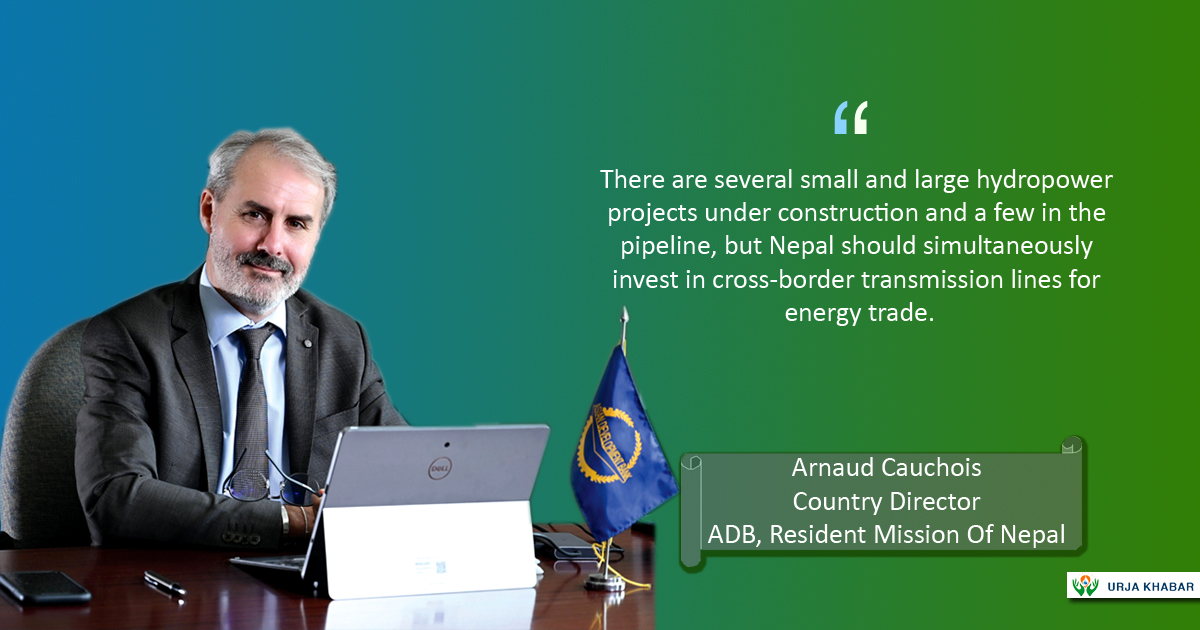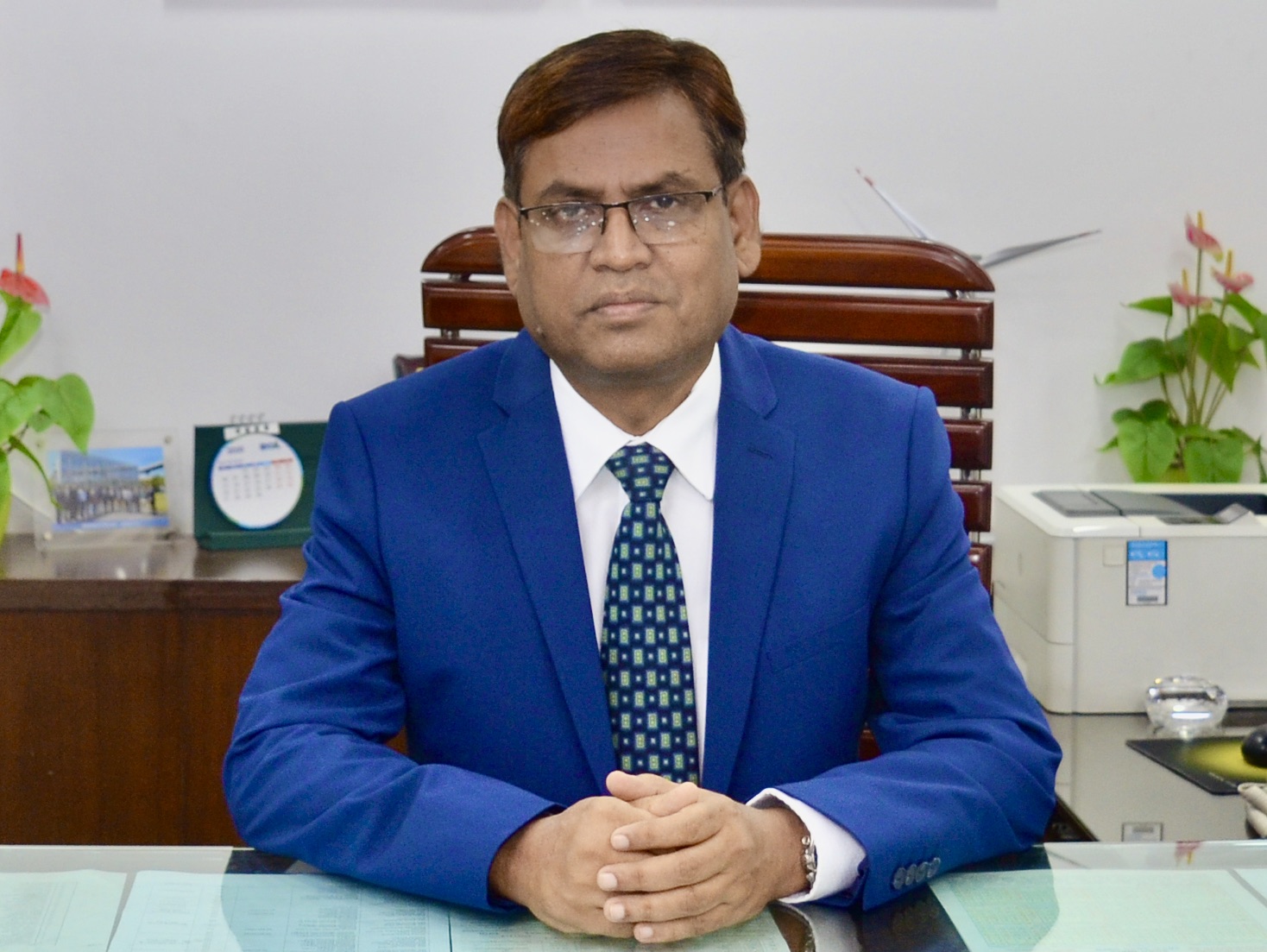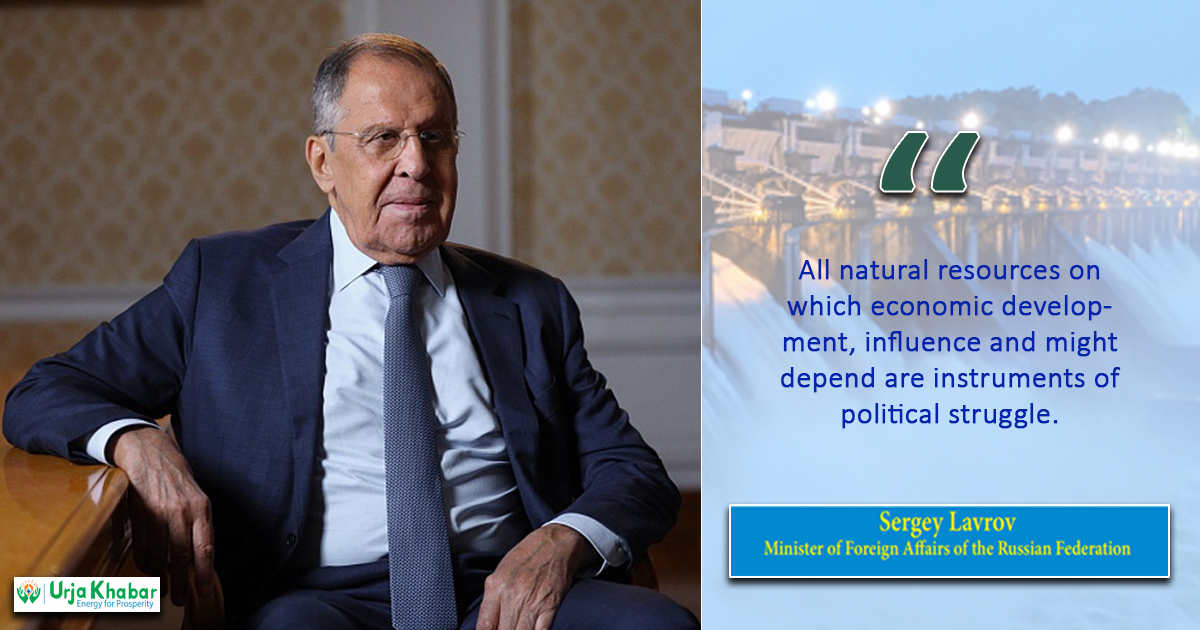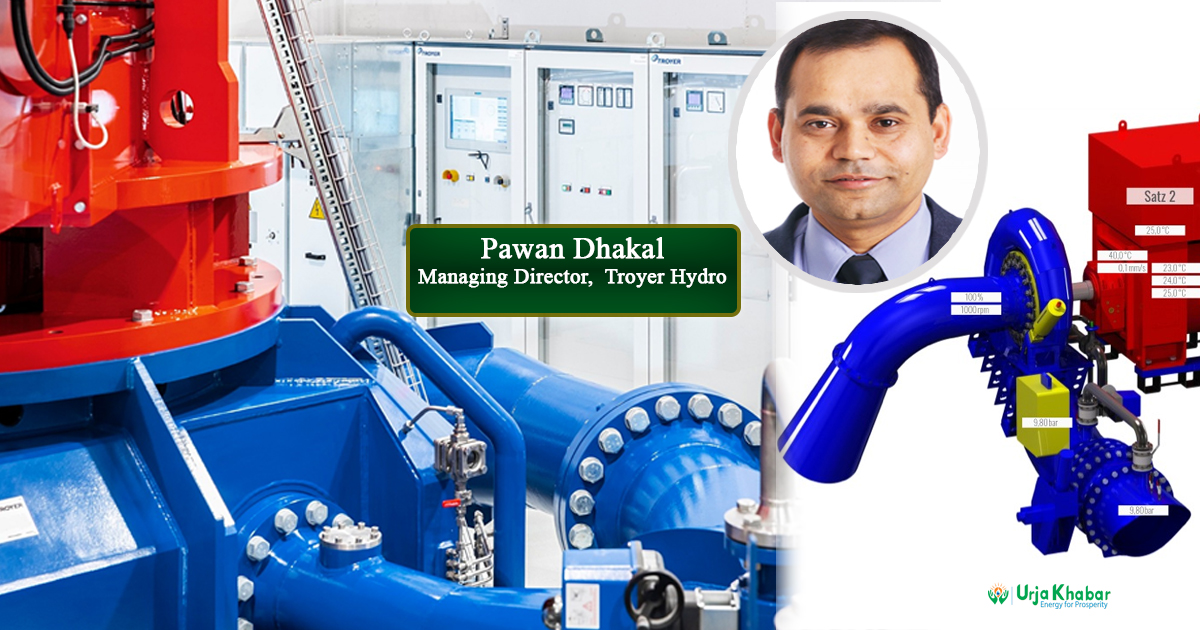Energy Update
Rural electrification, improved consumption and power trade keys to gain high growth

Kathmandu; The Asian Development Bank (ADB), a Manila-based multilateral donor agency, has been providing valuable support to achieving a prosperous, inclusive, resilient and sustainable Asia and the Pacific, while sustaining its efforts to eradicate extreme poverty. It has been assisting its member countries by providing loans, technical assistance, grants and equity investments to promote social and economic development.
Apart from providing support to various economic areas including better road and air connectivity; sustainable water supply and sanitation; upgraded skills of the labor force; development and management of water resources; and stronger agriculture value chains of Nepal, the ADB has added hydropower development and decentralized renewable energy development, transmission lines for domestic and regional connectivity, and energy access and efficiency in its priority lists for Nepal.

In this context, Urja Khabar talked with Mr Arnaud Cauchois, the country director of the ADB for Nepal. Excerpts:
1. What priority has the ADB set in its concern for investment in the energy sector? How is the context of Nepal different from other developing countries?

The ADB has been a leading development partner in Nepal’s energy sector, supporting the government of Nepal in a broad spectrum of interventions in generation, transmission, distribution, access, and overall sector reforms. The central theme of the ADB’s support in the energy sector is to contribute to Nepal’s development outcomes by achieving energy security at home and developing energy exports. ADB’s main focus in its country partnership strategy for Nepal, 2020–2024 is to make the country’s energy sector a key driver of inclusive economic growth.
Nepal has one of the largest hydropower potentials in the region, both per capita and per unit of its GDP.
In recent years, Nepal’s energy sector has made significant progress with increased electricity generation, enhanced domestic and cross-border transmission capacity and also reduction in system losses. We also saw the end of nationwide load shedding.
However, Nepal’s per capita electricity consumption of around 173 kilowatt hours per year is one of the lowest in the world and South Asia. But with its rich water resources, the growth prospect of the hydropower sector in Nepal is immense. In this context, the great potential of Nepal to fuel its economy through clean, indigenous, and sustainable energy resources is something that makes Nepal different from other developing countries.
Rational use of hydropower in Nepal not only helps to power domestically but also supports in the wider adaptation of intermittent renewable energy sources like solar energy in the region, for e.g., in India. Therefore, Nepal’s hydropower can also play a significant role in the decarbonization of the region. The ADB is keen to work with the Government of Nepal to further the development of Nepal’s energy sector as a means to reduce the impact of Climate Change.
The ADB is committed by its climate change and safeguards policy to support Nepal in following a climate-resilient sustainable energy sector development path by promoting renewable energy and climate financing for promoting carbon neutral development.
2. From the side of the ADB, how do you see growth in Nepal’s energy sector?
The growth prospect of the hydropower sector in Nepal is immense. On the demand side, per capita electricity consumption in Nepal is still lower despite having huge potential to grow, thereby providing a firm basis for domestic energy demand. On the supply side, around 6,000 rivers with a total length of 45,000 km have been crisscrossing the country, discharging about 220 billion cubic meters of water annually. These water resources have the technical potential to generate 83 GW of electricity, of which 42 GW is considered economically viable.
Over the years, Nepal has realized that hydropower generation plants alone would not help it unlock the full potential of the energy sector unless adequate investment is made in the transmission and distribution sectors. Lack of infrastructure to connect generation hubs to load centers has prevented a number of hydropower projects, especially those built by the private sector, from evacuating power. This has had a considerable bearing on the flow of private investment into the hydropower sector. Inadequate transmission infrastructure has also slowed the process of generating electricity on a large scale for exports. Robust distribution networks are also important to promote access to grid electricity and reliability of electricity supply.
3. What is the investment of ADB's total portfolio in the energy sector of Nepal? Are you satisfied with the utilization of funds in the sector?
The ADB’s cumulative portfolio in Nepal’s energy sector amounts to $1.3 billion in sovereign loans and grants. ADB is also pursuing strategic partnerships with other development partners to support the government in providing a wider flow of financial resources and knowledge. Major cofinancing partners include the European Investment Bank, the Japan International Cooperation Agency, the Government of Norway, and Scaling Up Renewable Energy Program in Low Income Countries, a targeted program of the Strategic Climate Fund.
The ADB is supporting (i) the development of storage hydropower plants, transmission lines and substations; (ii) the expansion and modernization of distribution infrastructure; (iii) the development of renewable energy and rural energy access; and (iv) energy sector reform. The overall improvements in the energy sector have facilitated commercial investment in the 216 MW Upper Trishuli-1 Hydropower Project, which is the largest private sector hydropower project under development with international investment participation, including ADB’s non-sovereign financing.
Out of the ADB’s active portfolio in the sector, only around 34 percent ($370 million) has been disbursed. This indicates a clear requirement to expedite project progress. Though 43 percent of the portfolio was approved after 2020, considering the project readiness and progress of the projects that should have been there, disbursement is still on the lower side.
4. What are the major hurdles in loan utilization in infrastructure and energy sector of Nepal? What can be done to remove these hurdles?
Progress toward achieving the desired policy and regulatory environment has been slow in Nepal. Fund utilization continues to be impacted due to systemic issues of land acquisition, forest clearance, and inter-agency coordination. These need to be addressed from the policy level as well as with adequate project readiness. We have noted that the government is already reviewing right-of-way policies for transmission lines, which have been a major issue in project implementation.
The environmental approval and clearances process themselves are very lengthy and the time taken in each step has severely delayed projects. We hope the committee under National Planning Commission overlooking issues in development; can coordinate it further, while systemic reforms are underway. Recent global rise in the prices of metals and the COVID-19 pandemic, in the last two years, have also impacted energy projects.
5. To effectively tap Nepal’s hydropower resources, the ADB-supported energy projects have focused on enhancing power transmission and distribution capacity and identifying viable hydropower for export. How much feasible do you see it for Nepal to export electricity to India?
The ADB’s current support focused on expanding and augmenting transmission and distribution infrastructure across the country. These will strengthen in-country infrastructure which will allow Nepal Electricity Authority (NEA) to cater to increasing domestic electricity demand and facilitate cross border power trade.
It is great news that Nepal has already started exporting electricity to India. In the long term, we hope the markets in both countries would be better integrated via mutually benefitting arrangements as the trading process evolves and the required infrastructure to enable it would be expanded. Due to complementary demand and supply profiles, especially between Nepal and India, we think, deepening power trading would be a win-win proposition for both countries. There is also demand from Bangladesh and Sri Lanka.
6. Can Nepal’s hydropower be considered as a strategic good to reduce the ballooning trade deficit of the landlocked country?
Definitely, Nepal has the resources and the potential and her neighboring countries have the high demand for energy. Nepal’s surplus energy in the wet season complements the higher requirements of its neighbors at the same time. With infrastructure for cross-border power trade under construction and progress in power trade, energy exports should be able to partly offset the trade deficit in future. Energy demand is huge in neighboring countries, particularly India, and Bangladesh.
Nepal has entered into energy trade agreements with India and Bangladesh. It has begun exporting its surplus energy to India, particularly during the rainy season. Once Nepal completes several of its reservoir-based hydropower projects, it will have surplus electricity even during the winter season. And the excess energy connected to the international grid line could be exported to Bangladesh, and other economies which would help lessen Nepal’s trade deficit.
7. Nepal is facing wastage of around 500 MW of electricity during peak production season due to low energy demand. What can be done to effectively utilize the produced hydroelectricity?
We have already seen steps, in the right direction, being taken by the government and the Nepal Electricity Authority (NEA) to manage the energy surplus in the wet season. Attempts to increase domestic demand and electricity exports should be continued as the approach to managing the surplus. For export, Nepal should continue to strengthen its transmission infrastructure and expedite cross-border interconnections along with developing hydropower projects. It should also continue its efforts to ensure a market for energy outside Nepal. The Government can aid domestic consumption of electricity through policy-level interventions that will promote the energy-intensive industries to establish and operate and incentivizing households to replace fossil fuels with electricity in day-to-day activities.
8. The government talks about promoting domestic consumption of locally produced hydroelectricity. But still domestic energy consumption is on the lower side. What should the government do to accomplish its target of increasing per capita household energy consumption?
Availability, reliability, awareness, and incentives would be the key to increasing per capita consumption of electricity. With current and expected energy production, availability of electricity should be easily addressed. To increase reliability and minimize outages, the NEA has been reinforcing its distribution systems. Distribution System and Rural Electrification Master Plan has been prepared with the support from the ADB and Government of Norway. It has set a firm basis for future works to ensure access and reliability.
The ADB is currently supporting the NEA to augment and reinforce its distribution system, which should address the issue of reliability too. This will increase confidence among users to maximize the use of electricity. Government and civil society can join hands to raise awareness at household level to gradually minimize fossil fuel usage and shift towards clean electricity. Government can also incentivize through policies and programs for wider usage of electricity, which has until now remained suppressed.
9. The ADB has been supporting Nepal to construct a storage project in Tanahu, what other projects do you have in the pipeline?
Besides Tanahu, the ADB has a plan to support the Government of Nepal in developing the 635 MW Dudhkoshi storage hydropower project, which will have water storage capacity of around 1600 million cubic meters. Further, we are also supporting the government in preparing 104 MW Lower Seti Hydropower Project, which will be a cascade project of the ongoing Tanahu Hydropower Project.
On the transmission line, we have to invest in 400 kV Butwal-Lamahi (for now, but it may be extended up to Dododhara in the subsequent phase) transmission line. We see an urgent need to upgrade and expand the distribution system of the NEA and are keen to work with the government in this area. These all interventions will be part of our sovereign operation.
On the non-sovereign side, ADB’s Strategy 2030 aims to achieve one-third of overall operations from private-sector engagements. In Nepal ADB is actively exploring opportunities to expand its private-sector operations. Our current non-sovereign (private sector) operations include investment in the 216 MW Upper Trishuli 1 hydropower project; engagement with eight partner banks under the Trade Finance Program, and grant support for a firm through ADB’s venture capital initiative. The pipeline includes potential lending to a bank under the Central Bank’s provision for external commercial borrowing.
10. The ADB has also been helping significantly in off-grid projects in rural areas. How successful have you found the projects to improve electrification in the country & what will be ADB’s plans in the line in future?
In addition to extending the centralized grid, Nepal is also ramping up support for decentralized renewable energy systems, especially for hard-to-reach rural communities. While the ADB is more engaged in large scale hydropower, transmission and centralized distribution expansion works, it is equally important that ADB engage in such types of small-scale decentralized energy system as it is the one viable way to provide electricity in those remote communities. ADB is currently engaged in successful partnership with the Alternative Energy Promotion Centre and keen to engage more with them on these efforts to ensure access to modern energy services to remote communities of the countries and help Nepal to achieve energy for all by 2030 (or even earlier is possible).
11. The ADB has been working in Nepal as a development partner for the past five decades or even more. You are here also for the next two years, how do you consider Nepal's political scenario and what can be its impact on the growth of hydropower?
The ADB is proud to stand with the Government of Nepal for the last 50 years and helping in establishing the foundation of the power system in the country. Even with several upheavals over the last 50 years in energy policy reforms and implementation, we were able to bring most of our interventions to a logical conclusion. Nepal is now in a unique position to bring about economic and social transformation. This will have a positive impact on all sectors, including the energy sector.
The strong partnership between the Government of Nepal and the development partners has contributed significantly to the development of Nepal’s energy sector. However, much more needs to be done. As of now, just around 90 percent of households in Nepal have access to electricity.
In my tenure as Country Director of ADB Nepal, I would like to see the partnership and the collaboration with the Government of Nepal strengthened more for further development of the energy sector. We are pursuing large scale, strategically important projects such as Dudh Koshi Storage Hydropower Project, Butwal- Lamahi 400 kV Transmission Line. I am keen to bring more investments in modernizing the NEA using advanced technologies that will enhance efficiency of its business process.
12. Although, the government has been looking forward to inviting a notable amount of foreign direct investment (FDI) in the past one decade, no desired outcome has been observed over the period. What are the underlying problems in your view?
In recent years, Nepal has made progress in reforming its legal and regulatory environment to attract greater private and foreign investment. Among others, they include the Public Private Partnership and Investment Act 2019 and Foreign Investment and Technology Transfer Act 2019. The reform momentum must be continued and further addressed bottlenecks that hinder the growth of small- and medium-sized enterprises. Nepal has to aim to connect its businesses with global value chains in areas of its comparative advantage, including niche agribusiness, eco-tourism, select light manufacturing, and service-sector with potential, including IT.
The ADB sees its support for reforms and investments in core infrastructure as ultimately reducing costs for businesses and enhancing their productivity. Going forward, Nepal should aim to complete key reforms, including relaxation of the minimum foreign-investment threshold, completing sovereign credit ratings, and operationalizing the currency-risk hedging mechanism.
13. The Government of Nepal has set the target of double-digit growth in the coming fiscal years. What prospects do you see that Nepal can achieve this target via the development of the hydropower sector?
The 15th five-year plan (2020-2024) envisages achieving double digit growth in the coming fiscal years. This target seems attainable if proposed reforms related to capital budget execution, institutions, and good governance are effectively implemented, and better coordination is ensured among the three tiers of governments. Since projects are hardly completed on time, Nepal is faced with additional financial burden. This perennial issue needs to be addressed.
The budget for fiscal year 2023 has indicated to enact a development law to facilitate timely execution of development projects. It has committed to enacting the federal civil service act and amending the local government operations act 2017 and the
intergovernmental fiscal arrangements act 2017. Such legal reforms would be crucial to improving public service delivery, and budget execution.
Nepal has so far harnessed 2,000 MW of hydroelectricity, out of 40,000 MW that is economically feasible. There are several small and large hydropower projects under construction and a few in the pipeline, but Nepal should simultaneously invest in cross-border transmission lines for energy trade. While there has been investment in cross border transmission lines along the southern border, this need to be explored along the northern border for energy trade with the People's Republic of China. While increasing its electricity generation, Nepal should also focus on rural electrification and enhance its domestic absorptive capacity of energy.
The budget speech for fiscal year 2023 has stressed on increasing per capita energy consumption to 400 kWh per annum. Hydropower development is one of the thrusts to catalyze Nepal’s growth but other sectors such as agriculture, tourism and light manufacturing industry, also need to be simultaneously promoted for the envisaged high and inclusive economic growth.
Mr. Arnaud Cauchois joined as ADB Country Director for Nepal in July 2021. As country director, Mr. Cauchois leads ADB operations in the country and policy dialogue with the government of Nepal and other development partners. He oversees the implementation of ADB’s country partnership strategy for Nepal that focuses on the country’s long-term development needs through improved infrastructure for private sector-led growth, improved access to devolved services, and environmental sustainability and resilience.
Mr. Cauchois has almost 3 decades of professional experience, including over 16.5 years with ADB. Mr. Cauchois, a French national, joined ADB in 2005 as a Rural Development Specialist and has since held numerous leading positions. Prior to this appointment, he served as Principal Water Resources Specialist for India, Nepal, and Sri Lanka and was out posted in ADB’s India Resident Mission. He was also assigned in ADB’s Nepal Resident Mission for 6 years and led the improvement of the water management systems in Nepal. He holds a Master of Science degree in water resource management from the Superior School of Tropical Agronomy in Montpellier, France.
This Interview is taken from the Urja Khabar bi-annual Journal published on 22nd June, 2022
Conversation
- Info. Dept. Reg. No. : 254/073/74
- Telephone : +977-1-5321303
- Email : [email protected]














